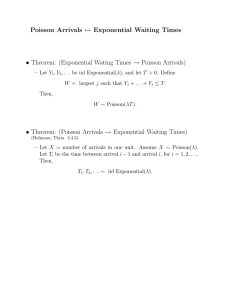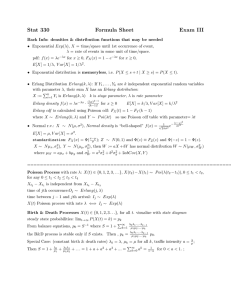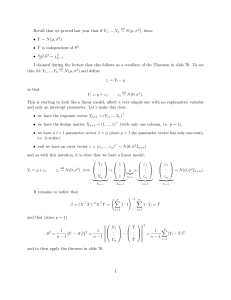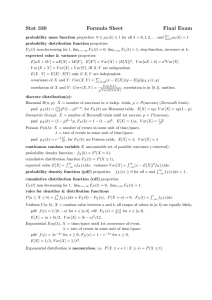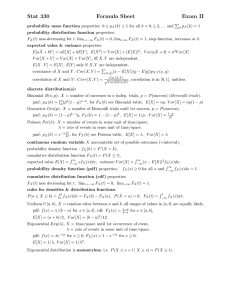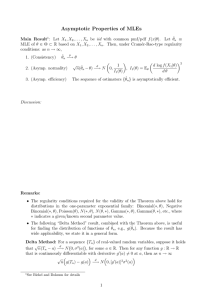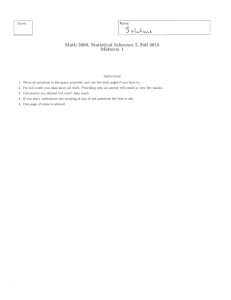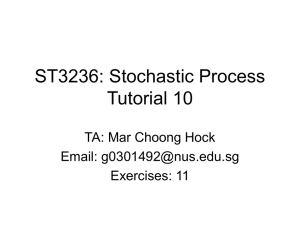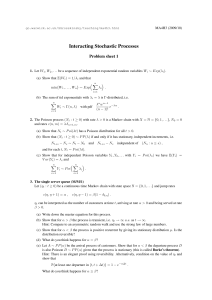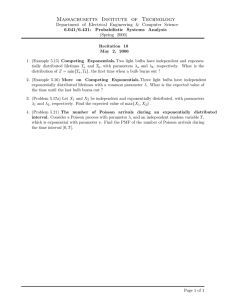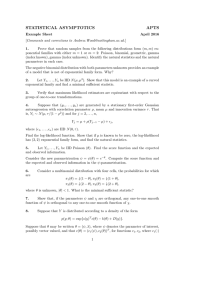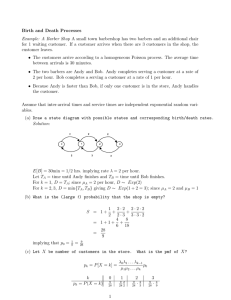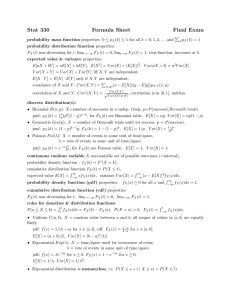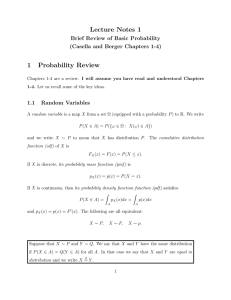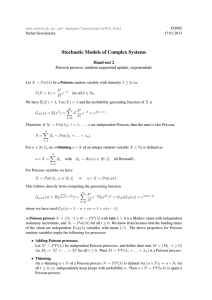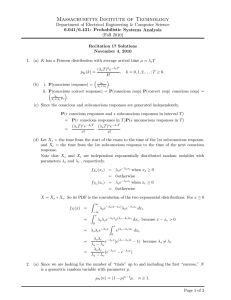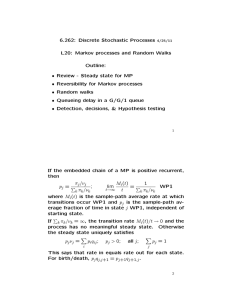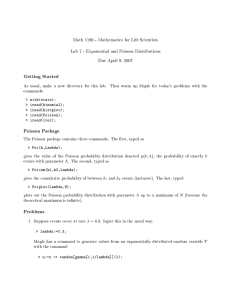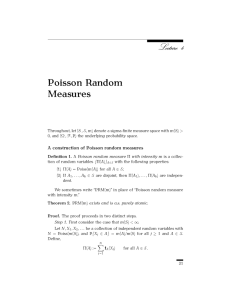Exponential Waiting Times leads to Poisson Arrivals Let Y , Y
advertisement
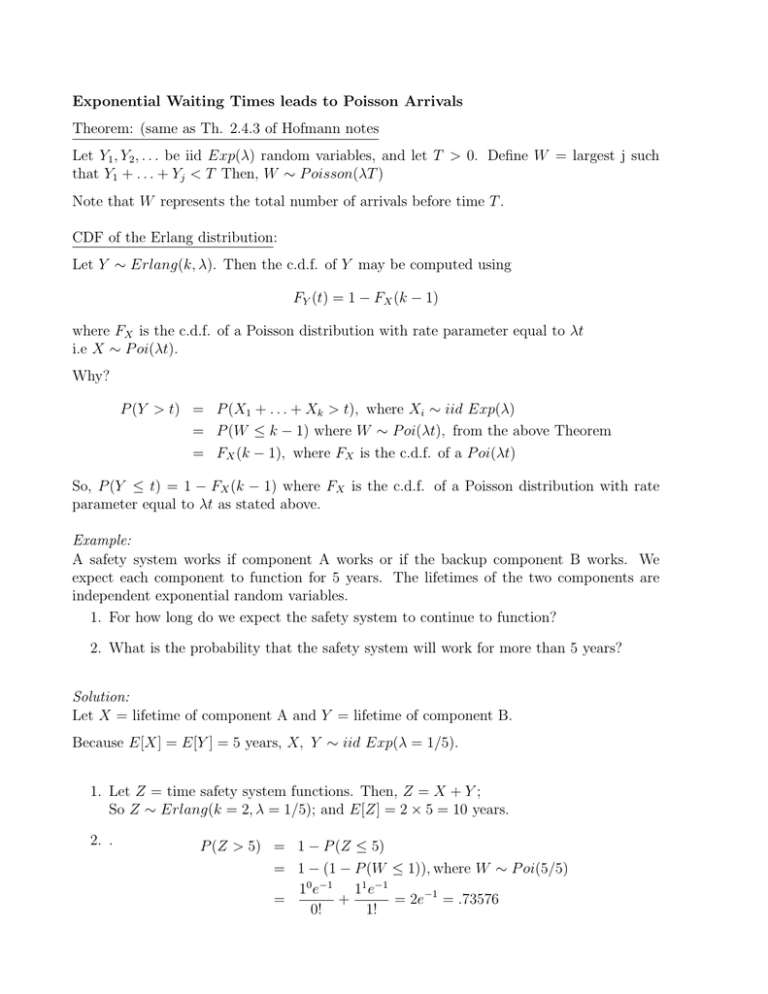
Exponential Waiting Times leads to Poisson Arrivals Theorem: (same as Th. 2.4.3 of Hofmann notes Let Y1 , Y2 , . . . be iid Exp(λ) random variables, and let T > 0. Define W = largest j such that Y1 + . . . + Yj < T Then, W ∼ P oisson(λT ) Note that W represents the total number of arrivals before time T . CDF of the Erlang distribution: Let Y ∼ Erlang(k, λ). Then the c.d.f. of Y may be computed using FY (t) = 1 − FX (k − 1) where FX is the c.d.f. of a Poisson distribution with rate parameter equal to λt i.e X ∼ P oi(λt). Why? P (Y > t) = P (X1 + . . . + Xk > t), where Xi ∼ iid Exp(λ) = P (W ≤ k − 1) where W ∼ P oi(λt), from the above Theorem = FX (k − 1), where FX is the c.d.f. of a P oi(λt) So, P (Y ≤ t) = 1 − FX (k − 1) where FX is the c.d.f. of a Poisson distribution with rate parameter equal to λt as stated above. Example: A safety system works if component A works or if the backup component B works. We expect each component to function for 5 years. The lifetimes of the two components are independent exponential random variables. 1. For how long do we expect the safety system to continue to function? 2. What is the probability that the safety system will work for more than 5 years? Solution: Let X = lifetime of component A and Y = lifetime of component B. Because E[X] = E[Y ] = 5 years, X, Y ∼ iid Exp(λ = 1/5). 1. Let Z = time safety system functions. Then, Z = X + Y ; So Z ∼ Erlang(k = 2, λ = 1/5); and E[Z] = 2 × 5 = 10 years. 2. . P (Z > 5) = 1 − P (Z ≤ 5) = 1 − (1 − P (W ≤ 1)), where W ∼ P oi(5/5) 10 e−1 11 e−1 = + = 2e−1 = .73576 0! 1!
